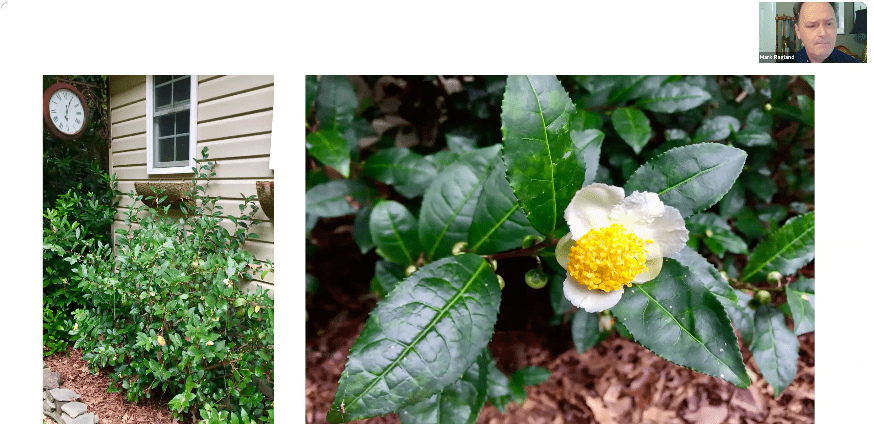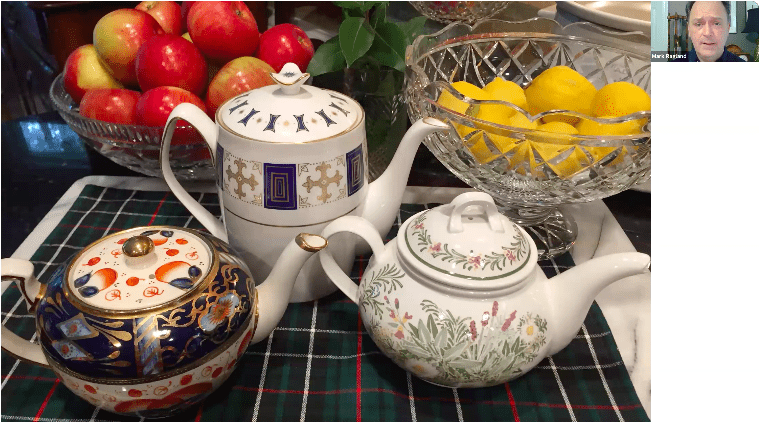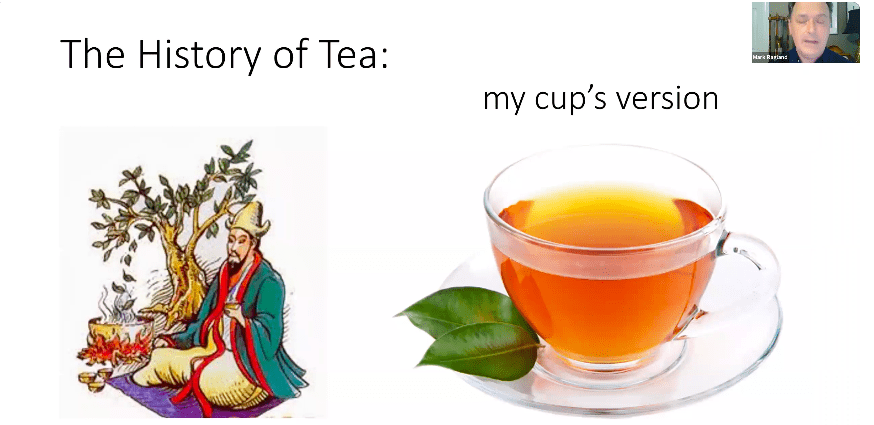Green Tea & More! A 5,000 Year Tradition
The 3,000+ varieties Camellia sinensis plant produce the second most consumed beverage on earth — tea, second only to water. More specifically, tea is the number one most consumed hot beverage in the world. I’ve been drinking green tea for as long as I can remember. I was eager to gain more information on tea, green tea, in particular, considering I drink it on the daily. When I heard about Mark Ragland’s class, Tea — A 5,000 Year Tradition, I was immediately intrigued.

Ragland’s tea bushes are grown in his very own backyard. Pictured on the right is a blooming Camellia tea plant.
The class covers information about the Camellia sinensis plant, 5,000 years of history, making the perfect cup, buying and storing tea, health benefits, and cooking with tea. Accompanied by history and tradition, tea is again becoming America’s beverage of choice. In this virtual class, we went in-depth about how a single leaf, depending on where it’s grown, picked and processed, provides an unlimited choice of flavors.
I found this class to be fascinating due to Ragland’s broad knowledge and interest in the topic. He mentions that there is only one tea garden throughout North America, located in Charleston, SC. Being such a far distance from the tea garden, Ragland decided to grow six of his very own tea bushes through hotspots (or warm microclimates) in his backyard in Virginia! He has been gardening since age 12 and his garden has been featured on PBS and in Country Gardens Magazine.
I enjoyed how this class showed me the specific steps to make my perfect cup of tea. I can now confidently say that I know how to correctly make myself a cup of tea. Ragland mentioned that adding milk to your tea will take away health benefits due to the tea’s chemical reaction with the milk. Before attending this class, I had used milk to add creaminess to my tea. From now on I will skip the milk and add stevia, herbs or lemon for maximum health benefits. I found it interesting when Ragland mentioned that the green tea from Japan has a different taste than green tea from China. If you’ve been drinking green tea that comes from Japan it would be interesting to mix it up and try it from China!
Before attending this class, I had rarely thought about the history that went on in order to have a cup of tea in my hand. Ragland summed up the 5,000 years of history and tradition that leads us to have a variety of tea flavors at our reach today. It all started with emperor Shennong and his first sip of tea in 2737 BCE.
If you enjoyed learning about tea, you might want to check out Mark Ragland’s next class on salt and pepper. Register now for Salt and Pepper: The Classic Pair on Sunday, November 8, 2020, from 3-4 p.m. Ragland will present how these classic spices became so popular, where they originate, the varieties available, and some fascinating trivia!

